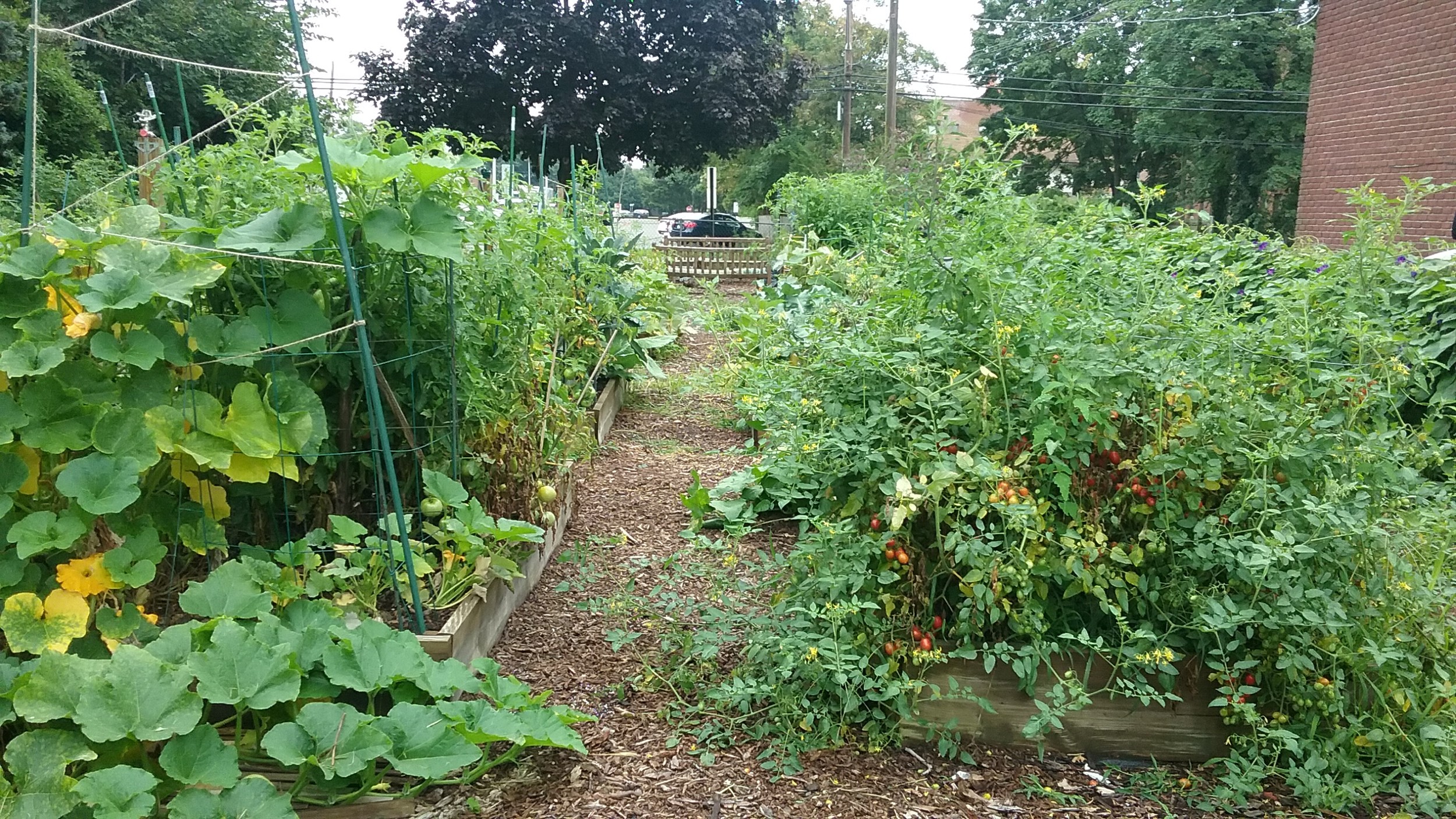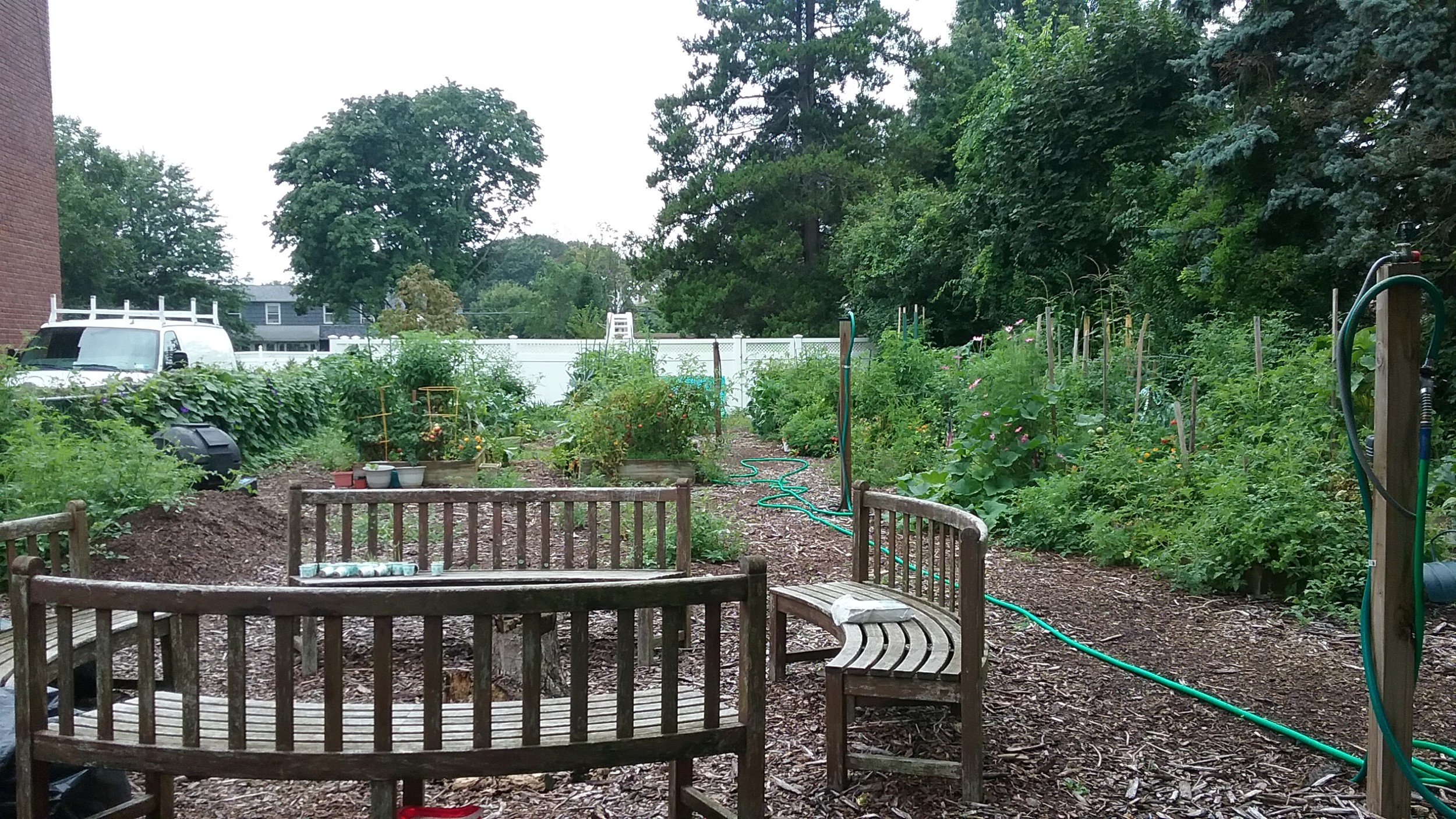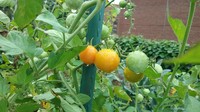RVC’s community garden bringing people together
Some people garden for the taste of the fresh produce, while others do it to relax. The scientific thrill of breeding their own strains of crops attract certain residents, and still others enjoy the slow-but-steady harvest that teaches them hard work and patience.
Whatever the type of gardener, you can find them at the Rockville Centre Community Garden on Jefferson Avenue and Water Street or as many describe it, the block behind Associated supermarket.
“Back in the day, this used to be a vacant lot,” said Mike Minasi, a 26-year-old human resource manager who majored in biology at St. Michael’s College. “There’s a water pipeline that goes all the way from here to Brooklyn, so you can’t build any structures on this lot. Back in 2012, we took it and created this community project to try to bring some beauty and education and healthy eating to Rockville Centre.”
When the garden started out, according to Randy Sorscher, a member of the Rockville Centre Conservancy, there was no water hookup from the village. The group instead cut a deal with the late Ed Bennett, who lived next door to the garden. He was given a section of the garden, free of charge, in exchange for the use of his home’s water.
“That literally was our lifeline,” Sorscher said. “He was instrumental in the success of the garden.” Bennett died last October, and the garden’s members are working to raise funds for a commemorative plaque to place on his plot, which Sorscher and Minasi affectionately call, “Ed’s Bed.”
The 16-plot garden is entirely organic, Minasi said, nourished entirely from all-natural compost, which is why, he added, the food tastes so exceptionally fresh. As they toured the garden with this Herald reporter, Sorscher and Minasi generously plucked fresh veggies from the stalks and vines that spilled out over the wooden plot enclosures, and implored that I try for myself.
Minasi’s sun-gold cherry tomatoes, which he described as “ready to explode,” were fantastically rich, juicy and sweet. The arugula of another gardener was notably full-bodied and complex, simultaneously peppery and refreshing.
At the entrance to the garden, orange monarch butterflies flitted in and out of a blue-flowered butterfly bush. “I went over to a [Girl Scout] troop and taught a workshop on how to grow flowers,” Minasi said. “They planted this butterfly bush for us themselves.”
The area is more than just a place for experienced horticulturists, the two gardeners said, as existing members pass on their wisdom to aspiring growers. “They’re very knowledgeable, and they like to share their knowledge,” Sorscher said. “We have social gatherings, garden socials, [and] they’re an opportunity for members to meet each other and share information as to what’s growing well this year [and] what’s not doing so well.”
For beginners, Minasi recommended growing leafy greens. “If you just sprinkle a packet of arugula, it’ll come up like crazy,” he said, “and all you have to do is give it a haircut every week or two, and it’ll keep coming all season.”
There’s a flow to the seasons, Sorscher said. “The first crops are usually the spring lettuces, spinach, arugula, and the spring peas. That season has run its course for the most part. Now obviously, it’s tomato season. After the summer, a lot of farmers will switch their beds over to some of the heartier greens, like kale, because they can survive in the colder weather.”
For Minasi and Sorscher, gardening is about more than just the tasty food. “A big part of this is the social aspect,” Minasi said. “It’s a nice feeling to be able to come here and socialize with the other members.” He added that he enjoys being able to see his hard work coming to fruition.
“I’ve met a lot of really nice people here,” Sorscher noted. “We have a nice variety of age groups. Families with young kids, and that’s a lot of fun to watch the kids get the thrill of watching their seeds come up. Really nice folks that I wouldn’t otherwise have the opportunity to meet.”
This year, due to increased interest, the conservancy is considering adding some sections. First-time members pay $100 for the season, and returning members pay $65.

 50.0°,
Fair
50.0°,
Fair 









